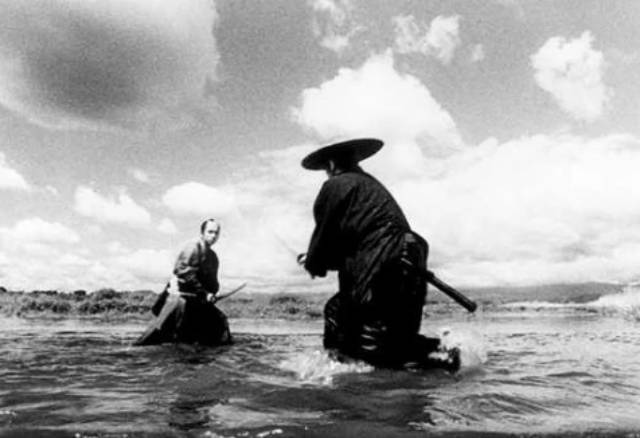
Samurai Fiction is a 1998 samurai-comedy film directed by Hiroyuki Nakano. The movie stands out for being filmed almost entirely in black-and-white, paying homage to classic jidaigeki samurai films. However, what sets it apart from its inspirations, including the works of Akira Kurosawa, is its modern twist, notably Tomoyasu Hotei's rock-and-roll soundtrack. A loose spinoff, Red Shadow, was released in 2001.
While the film’s black-and-white style evokes the traditional aesthetic of older samurai movies, it also allows for striking uses of color. Most notably, whenever a character dies, the screen briefly flashes red. This dramatic use of color also bookends the film at the beginning and end.
Samurai Fiction marked the directorial debut of Hiroyuki Nakano, who had previously worked as a music video director for MTV Japan. His background in music videos influences the film’s dynamic direction. It was also the acting debut of Japanese rock star Tomoyasu Hotei, who played a key role.
The plot follows Inukai Heishirō (Mitsuru Fukikoshi), the son of a clan officer. After a treasured sword, gifted to his clan by the Shogun, is stolen by the rogue samurai Kazamatsuri (Tomoyasu Hotei), Heishirō defies his father’s advice and vows to retrieve the sword himself. Concerned for his son, Heishirō's father secretly sends two ninja to watch over him.
During an early confrontation, Kazamatsuri injures Heishirō and kills one of his companions. Heishirō finds refuge with an older samurai, Hanbei Mizoguchi (Morio Kazama), and his daughter Koharu (Tamaki Ogawa) while he recovers and contemplates his next move. Though Mizoguchi advises Heishirō against seeking revenge, the young man’s sense of honor compels him to confront Kazamatsuri. Mizoguchi eventually agrees to help, suggesting Heishirō use rocks instead of swords to defeat his enemy.
Meanwhile, Kazamatsuri finds refuge at a gambling house owned by Lady Okatsu (Mari Natsuki), who becomes infatuated with him. One of the ninjas sent to protect Heishirō bribes Okatsu to poison Kazamatsuri’s sake, but when Kazamatsuri detects the poison, he kills her and kidnaps Koharu to force Mizoguchi into a fight.
Mizoguchi confesses to Heishirō that he killed Koharu’s father in the past and, despite his immense skill, has since refused to draw his sword. They set off to rescue Koharu and confront Kazamatsuri. Before the fight, Heishirō promises to marry Koharu if Mizoguchi wins. During the battle, Mizoguchi uses a wooden sword, only drawing his real blade after Kazamatsuri destroys the wooden one. Mizoguchi disarms Kazamatsuri near a cliff, and Kazamatsuri, admitting defeat, leaps off the cliff in an honorable suicide. When Heishirō and Koharu search the area below, they find no sign of Kazamatsuri's body. However, Koharu notices the stolen sword lying at the bottom of the river, which Heishirō recovers.
A year later, Heishirō is married to Koharu, the sword is restored, and Mizoguchi has become an official in Heishirō's clan.
See also
-
Tatara Samurai
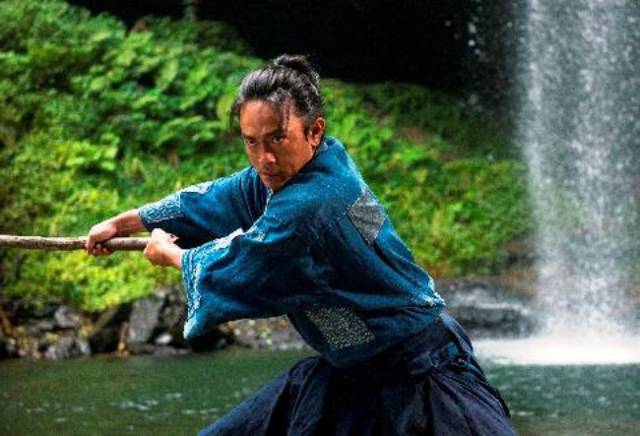
One day, bandits raid the quiet Tatara village, renowned for its steelworks and sword craftsmanship. Despite the arrival of samurai to protect the villagers, young Gosuke's mother is tragically killed while fleeing with him.
-
Rurouni Kenshin
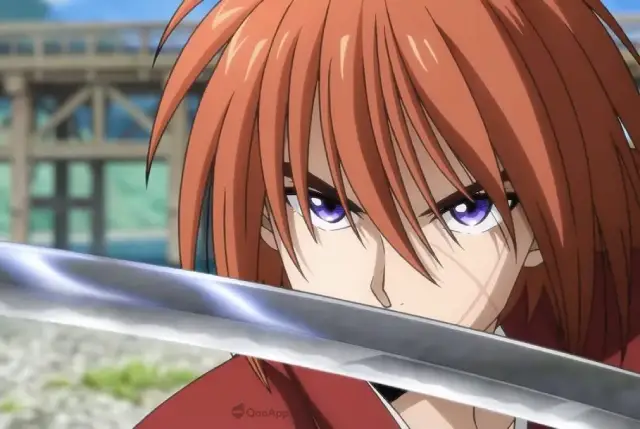
Rurouni Kenshin: Meiji Swordsman Romantic Story (Japanese: Hepburn: Rurōni Kenshin -Meiji Kenkaku Roman Tan-) is a Japanese manga series created by Nobuhiro Watsuki. Set in 1878, during the 11th year of the Meiji era in Japan, the story follows a former assassin known as Hitokiri Battosai. After his role in the turbulent Bakumatsu period, he adopts the identity of Himura Kenshin, a wandering swordsman who vows never to kill again. He dedicates his life to protecting the people of Japan. Watsuki crafted this series with the intent to create a unique shōnen manga, distinguishing it with a protagonist who is a former assassin and a narrative that becomes increasingly serious as it progresses.
-
Samurai Spy
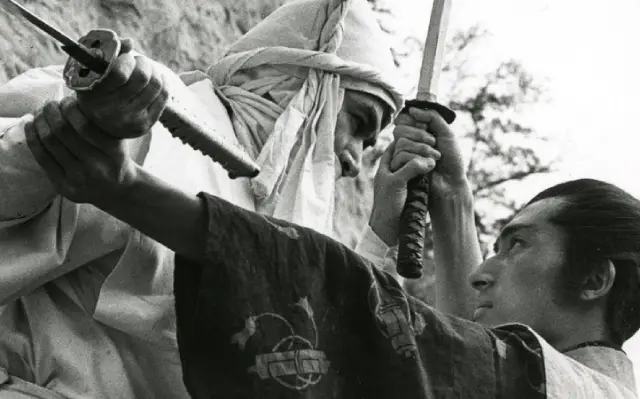
Samurai Spy (Ibun Sarutobi Sasuke), also known as Spy Hunter, is a 1965 film directed by Masahiro Shinoda, adapted from a novel by Koji Nakada. The film follows the legendary ninja Sasuke Sarutobi as he hunts the elusive spy Nojiri, while a shadowy figure named Sakon leads a group of men with their own designs on Nojiri. As the pursuit unfolds, the lines between allies and enemies blur, leaving everyone unsure of each other's true allegiance. Created during the height of the Cold War, the movie reflects the complexities and shifting loyalties of spies caught in the power struggles of their era.
-
Samurai III: Duel at Ganryu Island
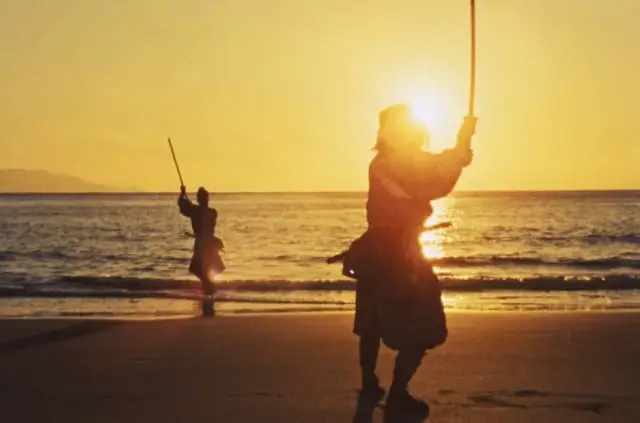
Samurai III: Duel at Ganryu Island (Japanese: Hepburn: Miyamoto Musashi Kanketsuhen: Ketto Ganryūjima) is a 1956 Japanese film directed by Hiroshi Inagaki and starring Toshiro Mifune. Filmed in Eastmancolor, it serves as the concluding chapter of Inagaki's Samurai Trilogy.
-
Samurai Marathon
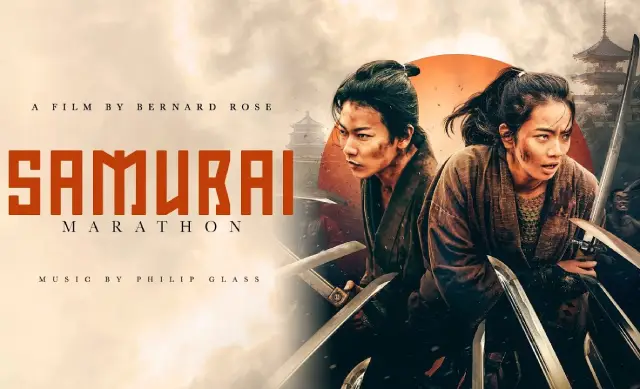
The producing team behind Takashi Miike's "13 Assassins," Jeremy Thomas and Toshiaki Nakazawa, reunite for another visually striking and action-packed samurai film. Based on a novel by Akihiro Dobashi, this film may not reach the same heights of relentless carnage or critical acclaim as its predecessor, but it still offers an exciting and occasionally humorous addition to the samurai genre, likely to resonate with festival audiences. This story of a literal running battle between rival samurai factions could see moderate success in theaters, though it may require more marketing effort without the ultra-violent appeal that made "13 Assassins" memorable.
-
Samurai II: Duel at Ichijoji Temple (1955)
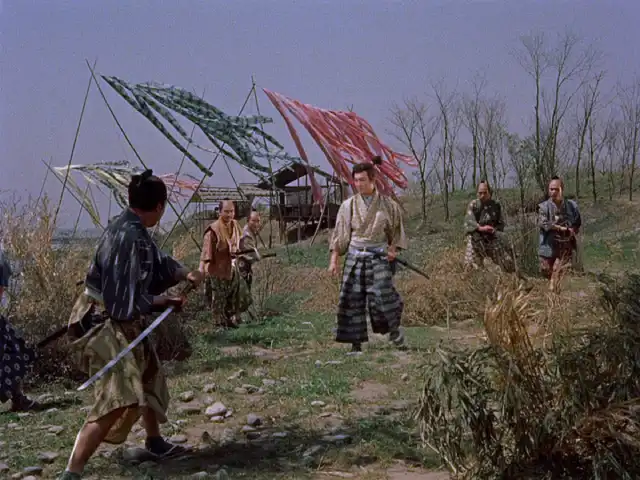
Duel at Ichijoji Temple (Hepburn: Zoku Miyamoto Musashi: Ichijōji no Kettō) is a 1955 Japanese film directed by Hiroshi Inagaki and starring Toshiro Mifune. Filmed in Eastmancolor, it is the second installment in Inagaki's Samurai Trilogy.
-
The Samurai I Loved (Semishigure)
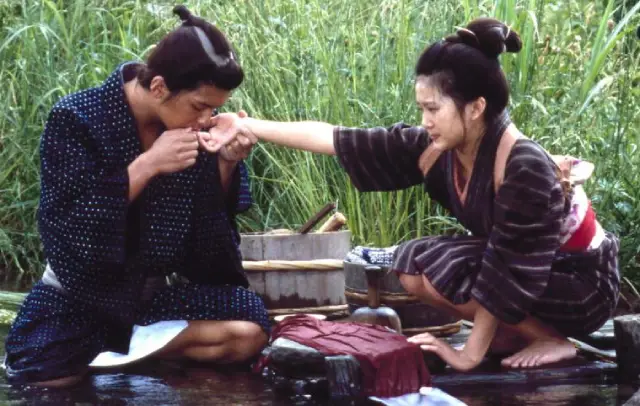
The costumes, settings, and script of The Samurai I Loved immediately transport samurai film enthusiasts back to the golden era of classic black-and-white samurai masterpieces.
-
Samurai Wolf (Kiba Okaminosuke)
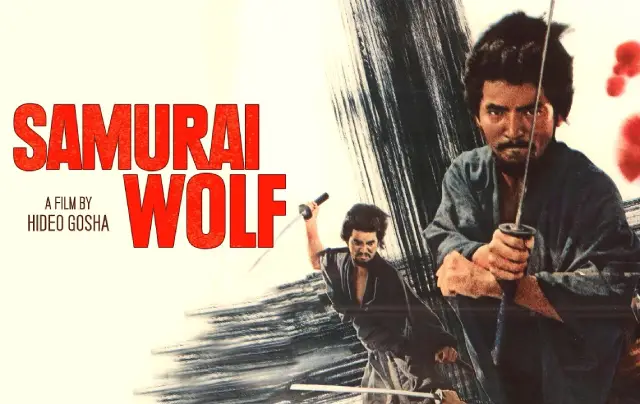
Hideo Gosha’s Samurai Wolf (Kiba Okaminosuke) is a gritty, hard-edged, and bloody reimagining of the traditional chambara film—a genre of action-oriented, historical sword-fighting movies that enjoyed widespread popularity in Japan throughout the 1950s but had begun to decline by the mid-1960s. Gosha had already established his reputation in this genre with films such as his debut feature, Three Outlaw Samurai (Sanbiki no samurai, 1964), a prequel to a popular television series, and Sword of the Beast (Kedamono no ken, 1965). These works established Gosha as a renegade artist unafraid to break conventions, a reputation that Samurai Wolf only cemented.

